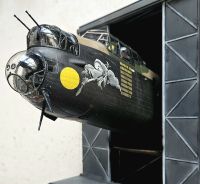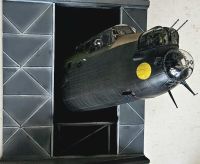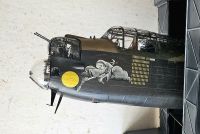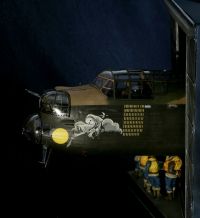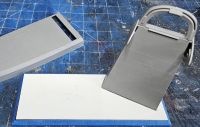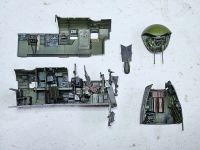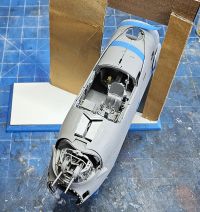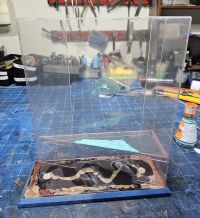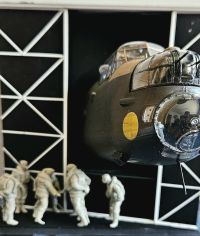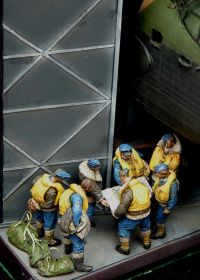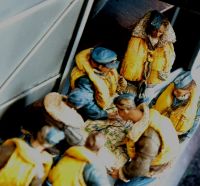Border Models 1/32 Lancaster Nose
By Suresh Nathan
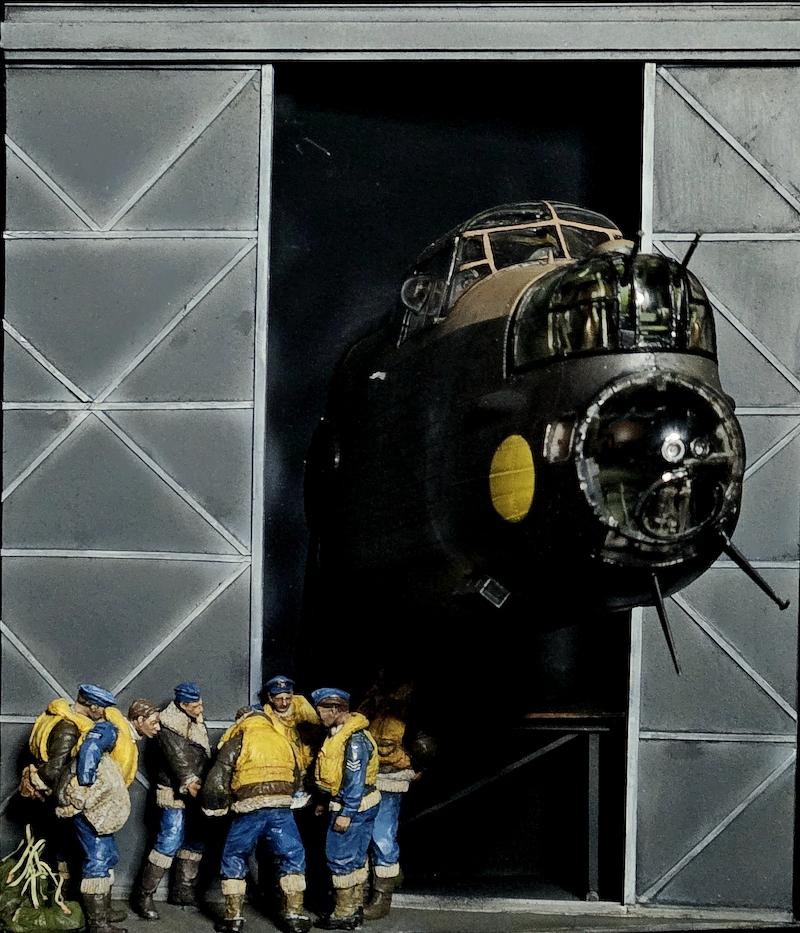
Introduction
The ‘Phantom’ first flew operationally with 100 Squadron in June 1943. She left the Squadron in November with 30 operations recorded on her side and in that same month she was transferred to the newly formed 550 Squadron at North Killingholme. On the 5th September 1944 she became the first Lancaster of 550 Squadron to reach 100 missions and on the 21st November she flew her last sortie with the squadron, her incredible record standing at 121 operational sorties and 830 operational flying hours.
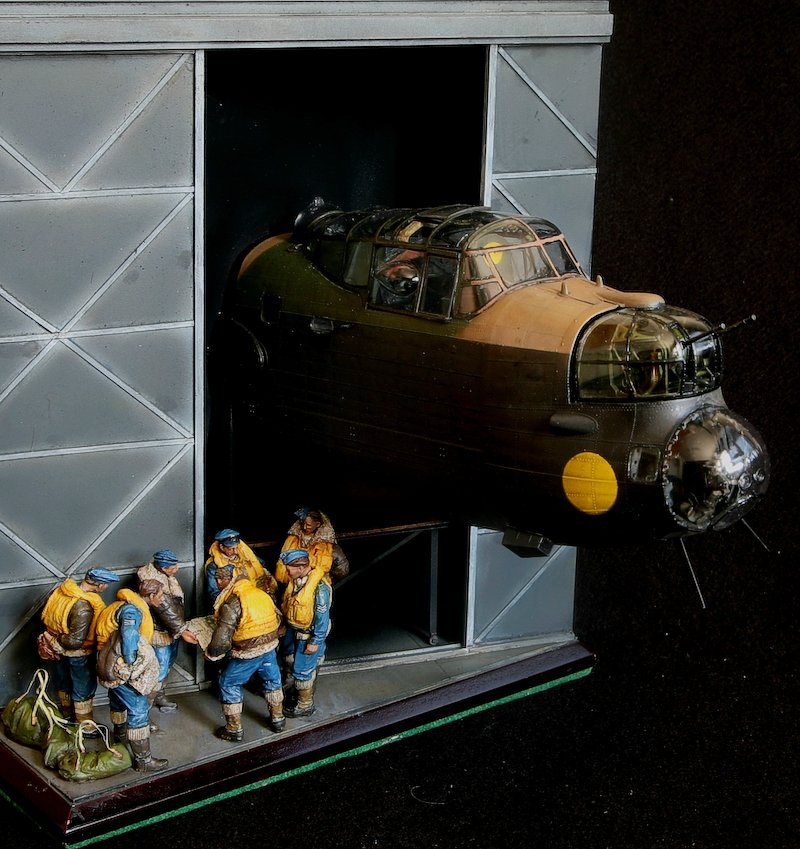
Model
Both Hong Kong Models (2018) and Wingnut Wings (2020) released the 1/32 rendition of the Lancaster at about the same time. The latter was acquired and released by Border Models and has been generally maligned for the box art. Nevertheless, it is widely accepted that the Border Models offering is the superior and the one I chose to build.
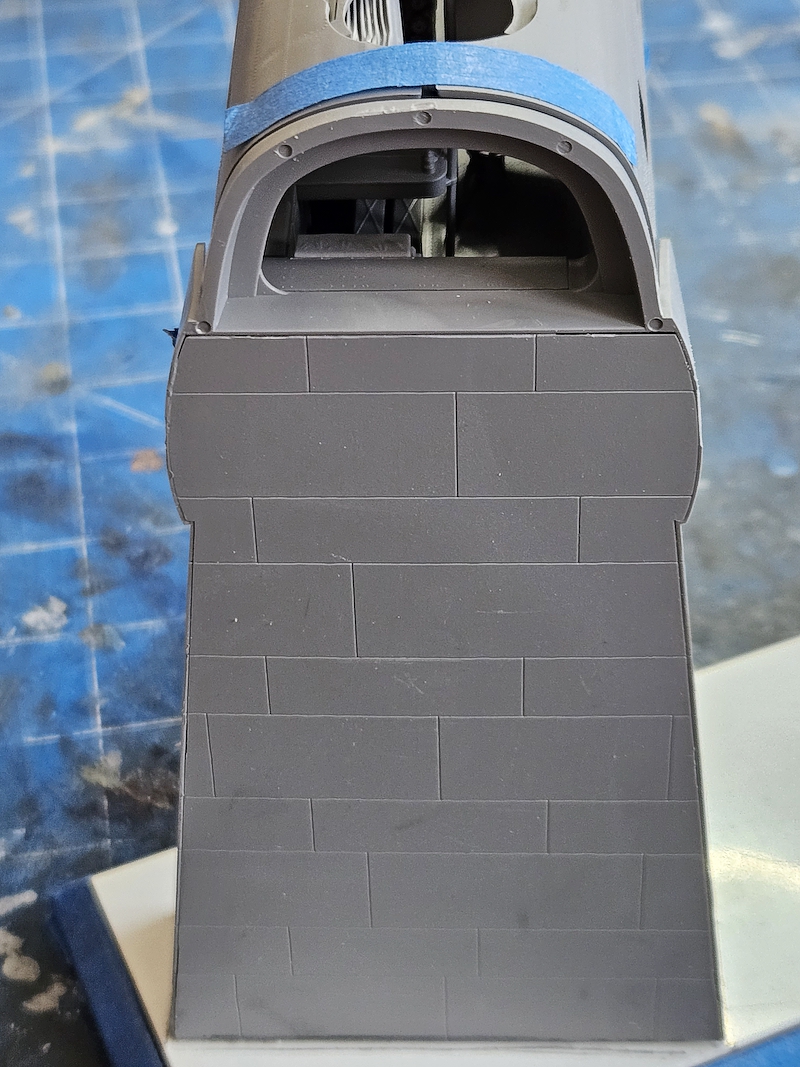
Displaying the model was another problem. As it builds from the box, the Hong Kong Model kit is displayed on a scaffold and is readily poseable as an unbuilt section of the plane. The Border Models kit comes with a stylized brickwork stand that is wholly ungainly as a diorama subject. I tried many options for the display (eg. peering over a fence) but it just did not work out. Finally, after discussion with a pal I decided on a hangar view. This optimised the full display of the noseart while remaining plausible as the observable beginning of the rest of the plane.
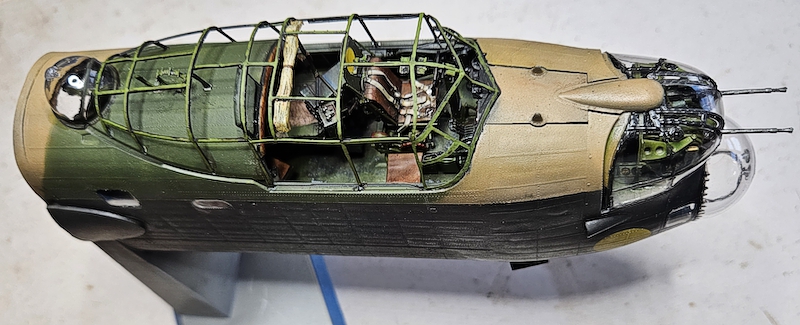
There were no real problems with the build except for the external details and combination of radar aerials. The refurbished Battle of Britain flyby Lancaster is a late model and this does not match the original which appears to be an earlier version. This is not specifically indicated in the instructions.
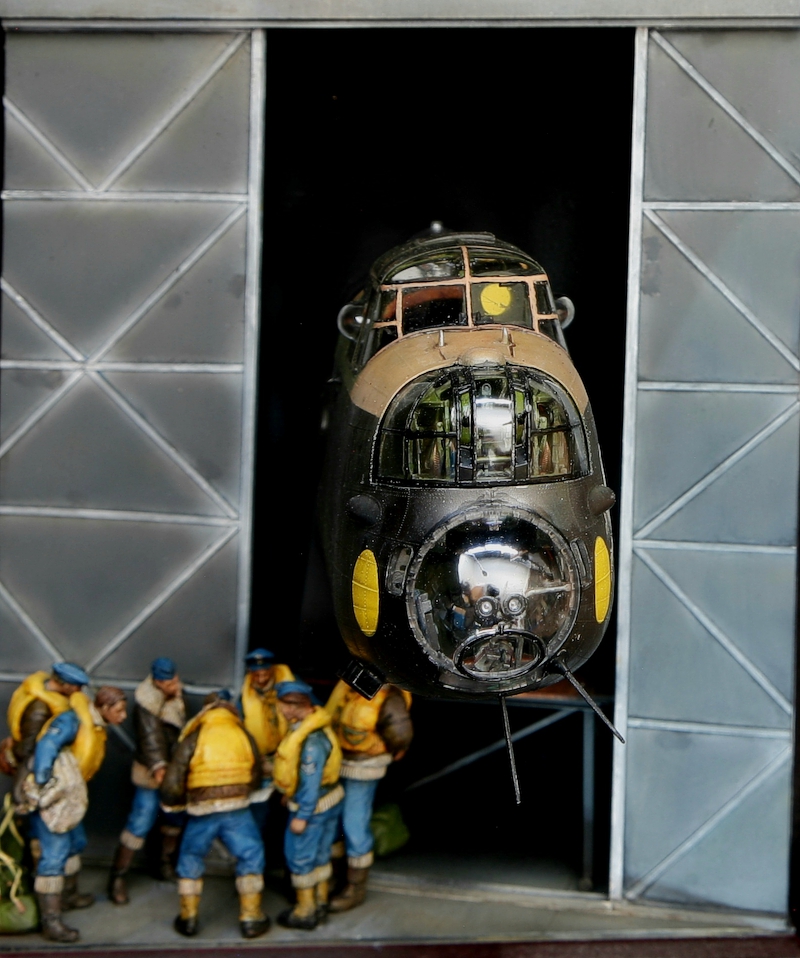
Diorama
The hangar was made from sheet styrene on a wooden base. Working from references I modelled the hangar doors. This proved to be unstable requiring a cross member which I disguised as a maintenance platform. The depth of the hangar was painted in Musou Black which absorbs 99.4% of light and looks great in the depths. The figures are a Lancaster Crew from AC models. In retrospect it might have been nicer to position the figures on the portside of the plane to show the phantom noseart above them but that came with its own problems.
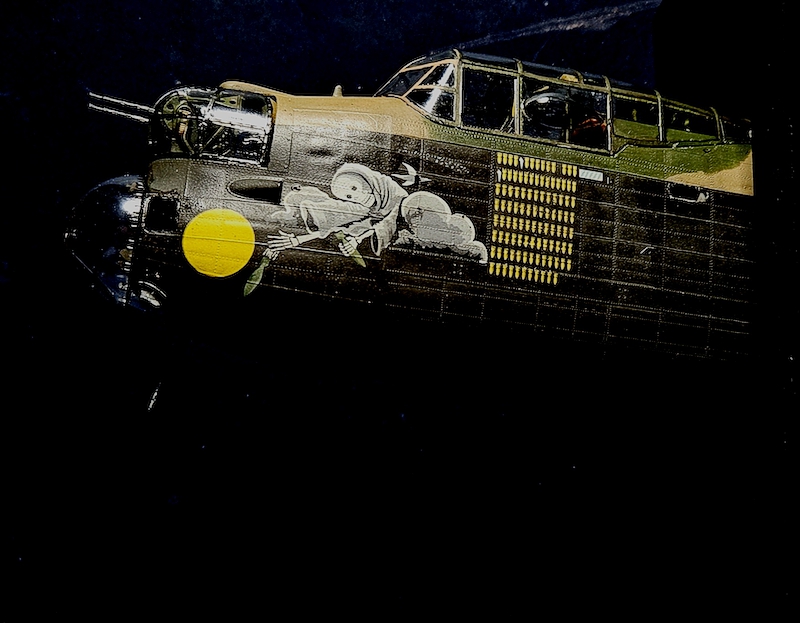
Painting and Markings
The model was base-painted in Vallejo black primer, varnished with Future-Tamiya Flat acrylic, weathered with turpenoids and chipped sparingly. I used oil washes for weathering and drop filters for colour variation. Black was used as panel wash. The worn silver was a combination of sponge dabbing, silver pencil and undercoat and masking of silver with overspray. The noseart chosen was the Phantom of the Ruhr and is fine. Nevertheless, the letters do not show on a black background. My references show that these had a faint white outline which I painted by hand and improved the display considerably.
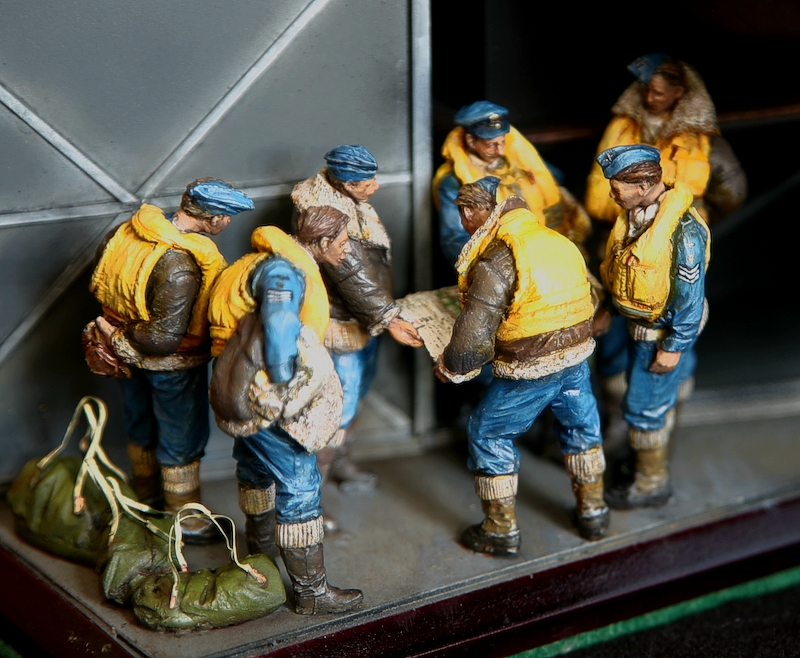
Figures
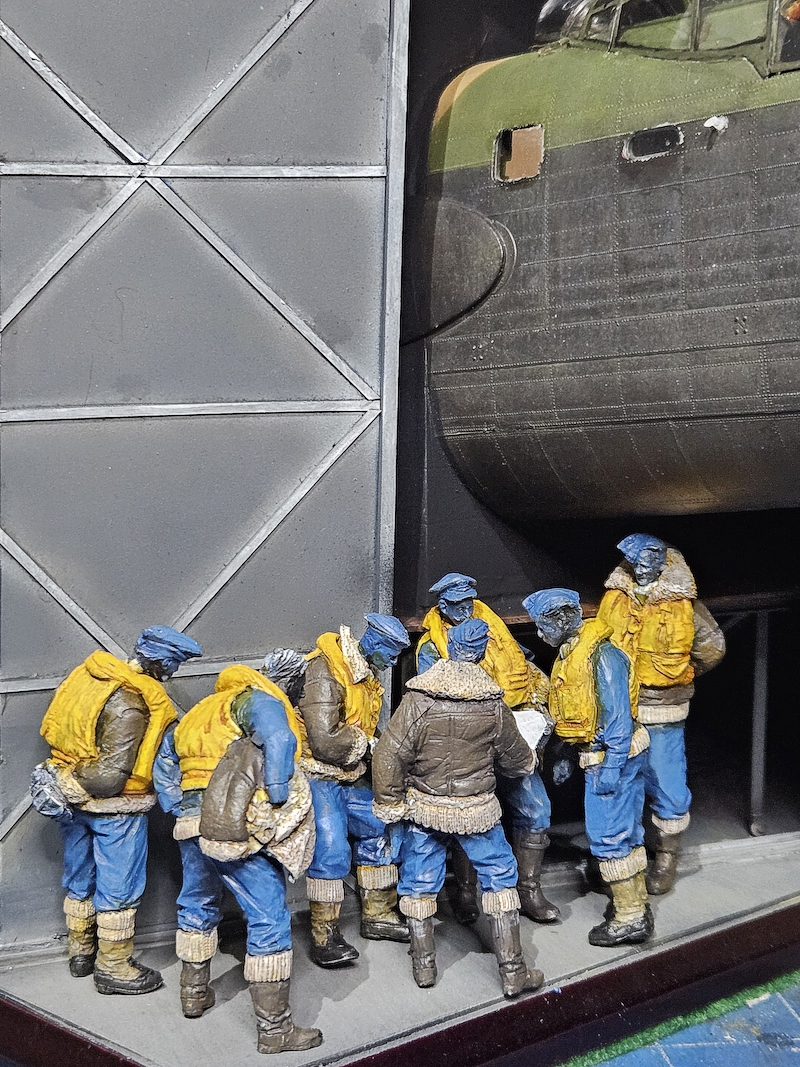
I picked up the AC models figures from a model show. They are a little coarse but probably the only offerings on the subject. They were painted in acrylic paints including the maps. The duffel bags came from the bags and had to be cut out of the resin base and re-sculpted a little.
Conclusion
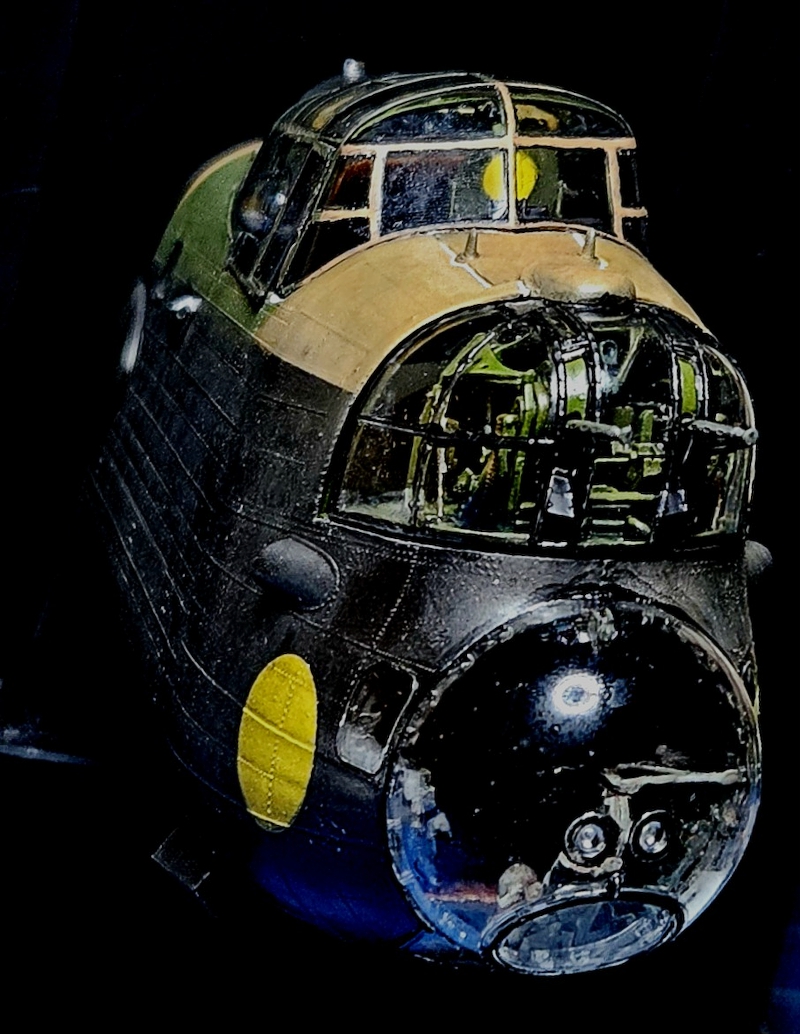
Not many would have the space for a full 1/32 Lancaster on their shelf. Building a diorama around something like that would be even more problematic. Nose art kits are a great idea for someone like me who wants something like this on the shelf without the cost of real estate. It builds into an unusual and beautiful display, and I would look forward to other bombers in this scale.
© Suresh Nathan 2024
This article was published on Saturday, January 13 2024; Last modified on Sunday, January 14 2024

